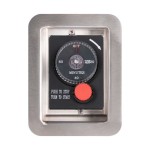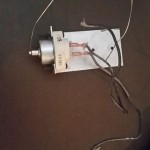Here is an article about gas fireplace replacement logs, adhering to your specifications:
Gas Fireplace Replacement Logs: A Comprehensive Guide
Gas fireplaces offer a convenient and aesthetically pleasing alternative to traditional wood-burning fireplaces. A key component of their visual appeal lies in the gas logs, which mimic the look of real wood. Over time, these logs can deteriorate, become damaged, or simply lose their aesthetic appeal, necessitating replacement. Understanding the various aspects of gas fireplace replacement logs is crucial for homeowners seeking to maintain the beauty and functionality of their gas fireplace.
This article provides a comprehensive guide to gas fireplace replacement logs, covering types, materials, selection criteria, installation considerations, and troubleshooting common issues. The intent is to provide information to assist homeowners in making informed decisions regarding the replacement of their gas logs.
Types of Gas Fireplace Logs
Gas fireplace logs are categorized primarily by the type of gas they are designed to burn: natural gas or propane. It is imperative to select logs that are compatible with the existing gas supply. Using the incorrect log type can lead to inefficient burning, hazardous conditions, and damage to the fireplace system.
Natural Gas Logs: These logs are designed for fireplaces connected to a natural gas line. Natural gas is typically a more cost-effective fuel source than propane, but requires a pre-existing natural gas connection to the home. Natural gas logs are designed to work with the specific pressure and BTU output of natural gas, ensuring efficient and safe operation.
Propane Gas Logs: Propane logs are intended for fireplaces that utilize propane tanks as their fuel source. Propane burns hotter than natural gas and requires different burner designs and ventilation considerations. Propane logs are often used in homes without access to a natural gas line.
Beyond the fuel type, logs can also be classified by their venting system compatibility. There are vented and ventless options, each requiring a specific type of fireplace and having different installation and safety considerations.
Vented Gas Logs: Vented gas logs require a fully functional chimney. They produce realistic flames and embers, as the combustion process mirrors that of a traditional wood-burning fire. However, a significant portion of the heat generated is lost through the chimney, making them less efficient for heating the room. Vented logs are typically used for their aesthetic appeal rather than their heating capabilities.
Ventless Gas Logs: Ventless gas logs, also known as vent-free logs, do not require a chimney or vent. They are designed to burn cleanly and efficiently, converting nearly all of the fuel into heat. They are more effective at heating a space, but they produce a small amount of water vapor and potentially carbon monoxide. Therefore, proper ventilation is essential, and carbon monoxide detectors are mandatory. They may not produce the same flickering flame appearance as vented logs, and can potentially trigger sensitivities in occupants due to the small amounts of combustion byproducts released.
Materials Used in Gas Fireplace Logs
The materials used in the construction of gas fireplace logs significantly impact their appearance, durability, and heat resistance. The most common materials include ceramic fiber, refractory cement, and vermiculite.
Ceramic Fiber: Ceramic fiber logs are lightweight and highly heat resistant. They are often used for their realistic appearance and ability to withstand high temperatures without cracking or warping. Ceramic fiber logs heat up quickly and radiate heat effectively. They are relatively inexpensive compared to other materials, making them a popular choice for many homeowners.
Refractory Cement: Refractory cement logs are heavier and more durable than ceramic fiber options. They are made from a dense, heat-resistant material that can withstand prolonged exposure to high temperatures. These logs tend to have a more realistic, wood-like appearance due to the detailed molding process possible with this material. They are also less prone to damage from handling.
Vermiculite: Vermiculite is a mineral that is often incorporated into the log mixture or used as an ember bed material. It is lightweight, porous, and insulates well. Vermiculite helps to distribute heat evenly and create a more realistic ember effect. It also enhances the overall visual appeal of the gas fireplace.
The choice of material should be based on the desired aesthetic, budget, and heating needs. Refractory cement logs offer durability and realism, while ceramic fiber logs provide an affordable and heat-efficient option. Vermiculite, either as a component of the logs or as a standalone ember bed, contributes to the overall visual appeal and heat distribution.
Selecting the Right Replacement Logs
Choosing the correct replacement logs involves considering several factors to ensure proper fit, compatibility, and desired aesthetic. Key considerations include size, style, burner type, and safety certifications.
Size and Fit: The size of the replacement logs must be appropriate for the fireplace firebox. Logs that are too large can obstruct the burner, impede airflow, and create a fire hazard. Logs that are too small may not provide adequate visual coverage and can detract from the overall appearance of the fireplace. Measure the firebox dimensions carefully and select logs that fit comfortably within the designated space, leaving sufficient clearance around the burner and fireplace walls.
Style and Appearance: Gas fireplace logs are available in a variety of styles, from traditional oak and birch to more contemporary designs. Consider the overall aesthetic of the room and choose logs that complement the existing décor. Look for logs with realistic bark details, natural-looking color variations, and convincing branch patterns. The goal is to create a visually appealing and authentic-looking fireplace experience.
Burner Type Compatibility: Ensure that the selected logs are compatible with the existing burner type (e.g., single burner, dual burner, or multi-burner). Different burner designs require specific log configurations to ensure proper flame distribution and heat output. Consult the fireplace owner's manual or a qualified technician to determine the correct log placement for optimal performance and safety.
Safety Certifications: Look for replacement logs that are certified by recognized safety organizations such as the American Gas Association (AGA) or CSA International. These certifications indicate that the logs have been tested and meet stringent safety standards. Choosing certified logs helps to ensure safe and reliable operation of the gas fireplace.
BTU Rating: The BTU (British Thermal Unit) rating of the logs should match the BTU output of the gas fireplace burner. Using logs with an incorrect BTU rating can lead to inefficient burning, overheating, or even damage to the fireplace system. Consult the fireplace owner's manual or a qualified technician to determine the appropriate BTU rating for the replacement logs.
Installation Considerations
Installing gas fireplace replacement logs is generally a straightforward process, but it is crucial to follow the manufacturer's instructions carefully to ensure proper placement and safe operation. Disconnecting the gas supply and ensuring the fireplace is cool are paramount safety considerations. While some homeowners may feel comfortable performing this task themselves, others may prefer to hire a qualified technician.
Safety Precautions: Before beginning the installation process, turn off the gas supply to the fireplace at the shut-off valve. Ensure that the fireplace is completely cool before handling the old logs or installing the new ones. Wear gloves to protect your hands from dirt and debris. Have a carbon monoxide detector nearby to monitor for any potential leaks after the installation is complete.
Log Placement: Refer to the manufacturer's instructions for the specific log placement configuration. Proper log placement is essential for optimal flame appearance, heat distribution, and safety. Ensure that the logs are positioned correctly over the burner and that they do not block the pilot light or gas ports. Incorrect log placement can lead to inefficient burning, soot buildup, and potentially hazardous conditions.
Burner Inspection: Inspect the burner for any signs of damage, corrosion, or blockages. Clean the burner ports with a wire brush or vacuum cleaner to remove any debris. If the burner is damaged, it may need to be repaired or replaced before installing the new logs. A faulty burner can affect the performance and safety of the gas fireplace.
Gas Leak Test: After installing the new logs, turn on the gas supply and test for leaks. Apply a soapy water solution to the gas connections and look for bubbles. If bubbles appear, tighten the connections or consult a qualified technician to address the leak. A gas leak can create a fire hazard and pose a serious health risk.
Troubleshooting Common Issues
Even with proper installation, several issues can arise with gas fireplace logs. Recognizing and addressing these issues promptly can ensure the continued safe and efficient operation of the fireplace.
Soot Buildup: Excessive soot buildup on the logs or fireplace glass can indicate incomplete combustion. This can be caused by improper log placement, a dirty burner, or a malfunctioning gas valve. Ensure the logs are positioned correctly, clean the burner regularly, and consult a qualified technician if the problem persists. Soot buildup can reduce the efficiency of the fireplace and create a potential fire hazard.
Pilot Light Issues: A pilot light that frequently goes out can be caused by a dirty pilot assembly, a faulty thermocouple, or a draft. Clean the pilot assembly with a small brush or compressed air. If the thermocouple is faulty, it will need to be replaced. Shield the pilot light from drafts to prevent it from being extinguished. A malfunctioning pilot light can prevent the fireplace from operating properly.
Flame Color: A yellow or orange flame can indicate incomplete combustion or the presence of contaminants in the gas supply. Ensure the logs are positioned correctly and clean the burner. If the flame color persists, consult a qualified technician to inspect the gas supply and burner system. An abnormal flame color can indicate a potential safety hazard.
Odor: A strong gas odor can indicate a leak. Immediately turn off the gas supply and evacuate the premises. Contact a qualified technician to locate and repair the leak. A gas leak is a serious safety concern that requires immediate attention.
Inefficient Heating: If the fireplace is not producing sufficient heat, it may be due to improper log placement, a dirty burner, or a malfunctioning gas valve. Ensure the logs are positioned correctly, clean the burner regularly, and consult a qualified technician if the problem persists. Inefficient heating can reduce the comfort and enjoyment of the gas fireplace.

How Long Do Gas Logs Last To Replace Fireplace

How Long Do Gas Logs Last To Replace Fireplace

Napoleon Gl18e Vented Gas Log Set 18 Inch

The Best Gas Log Sets For 2024 Fireplaces Direct Learning Center

How Long Do Gas Logs Last To Replace Fireplace

Realfyre Golden Oak Vented Gas Log For Small Fireplace 12

Warming Trend Update Gas Logs To Improve Performance And Appearance Walton

Hargrove Classic Oak Vented Gas Fireplace Logs 15 Inch

Small Gas Logs Reduced Depth Vented And Ventless

Empire Flint Hill Ventless Gas Log Set Woodland Direct
Related Posts








